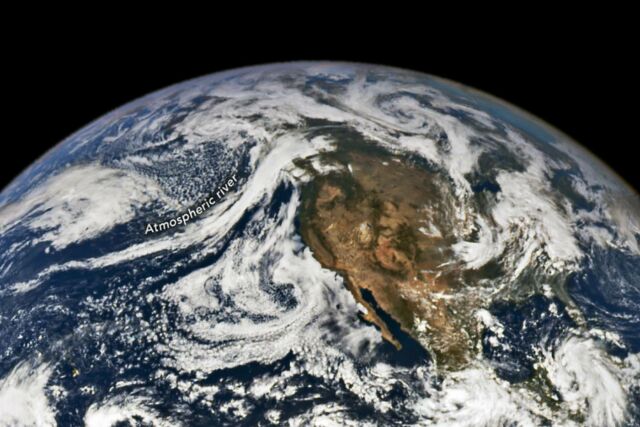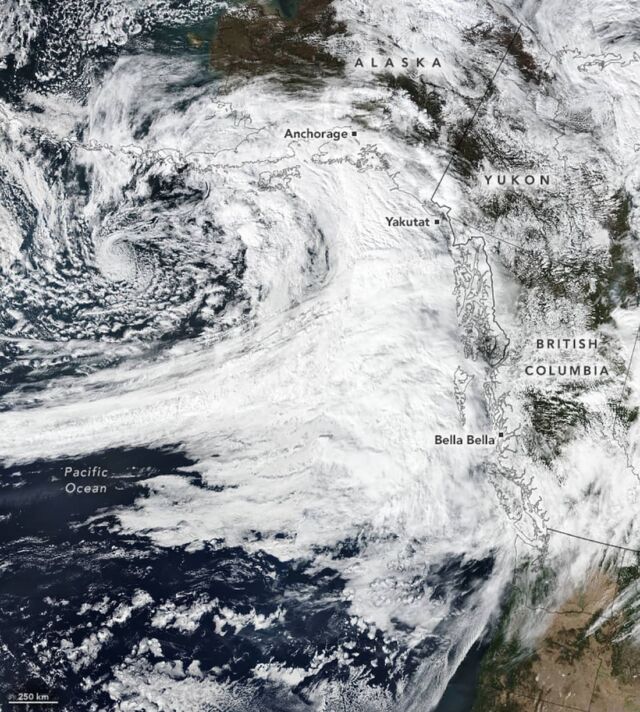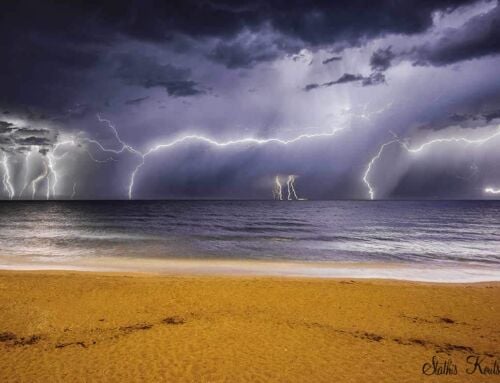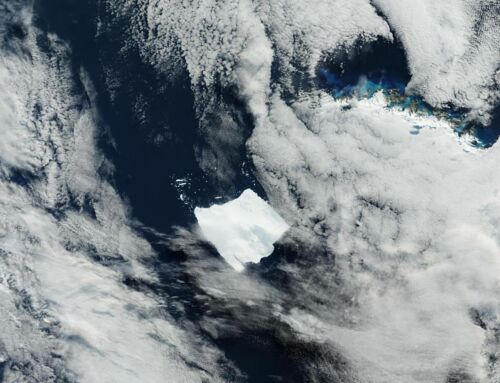 Atmospheric River swept through the Gulf of Alaska. NASA Earth Observatory image by Michala Garrison
Atmospheric River swept through the Gulf of Alaska. NASA Earth Observatory image by Michala Garrison
Atmospheric rivers are part of a larger weather system, known as extratropical cyclones, which move heat and moisture from the tropics toward the poles.
In September 2024, a powerful atmospheric river swept across the Gulf of Alaska, bringing heavy rain to coastal areas of British Columbia, Canada, and southeastern Alaska. Due to its long duration and high moisture content, experts believe it may have been one of the most intense atmospheric rivers in the northeastern Pacific since satellite records began in 2000.
 Atmospheric River swept through the Gulf of Alaska. NASA Earth Observatory image by Michala Garrison
Atmospheric River swept through the Gulf of Alaska. NASA Earth Observatory image by Michala Garrison
This potent storm was captured by the VIIRS (Visible Infrared Imaging Radiometer Suite) on the Suomi NPP satellite on September 22. The image shows a long stream of water vapor, a characteristic feature of atmospheric rivers, reaching the west coast of North America after traveling across the Pacific from Southeast Asia. These systems often release moisture as rain or snow when they hit land.
source Earth Observatory





Leave A Comment